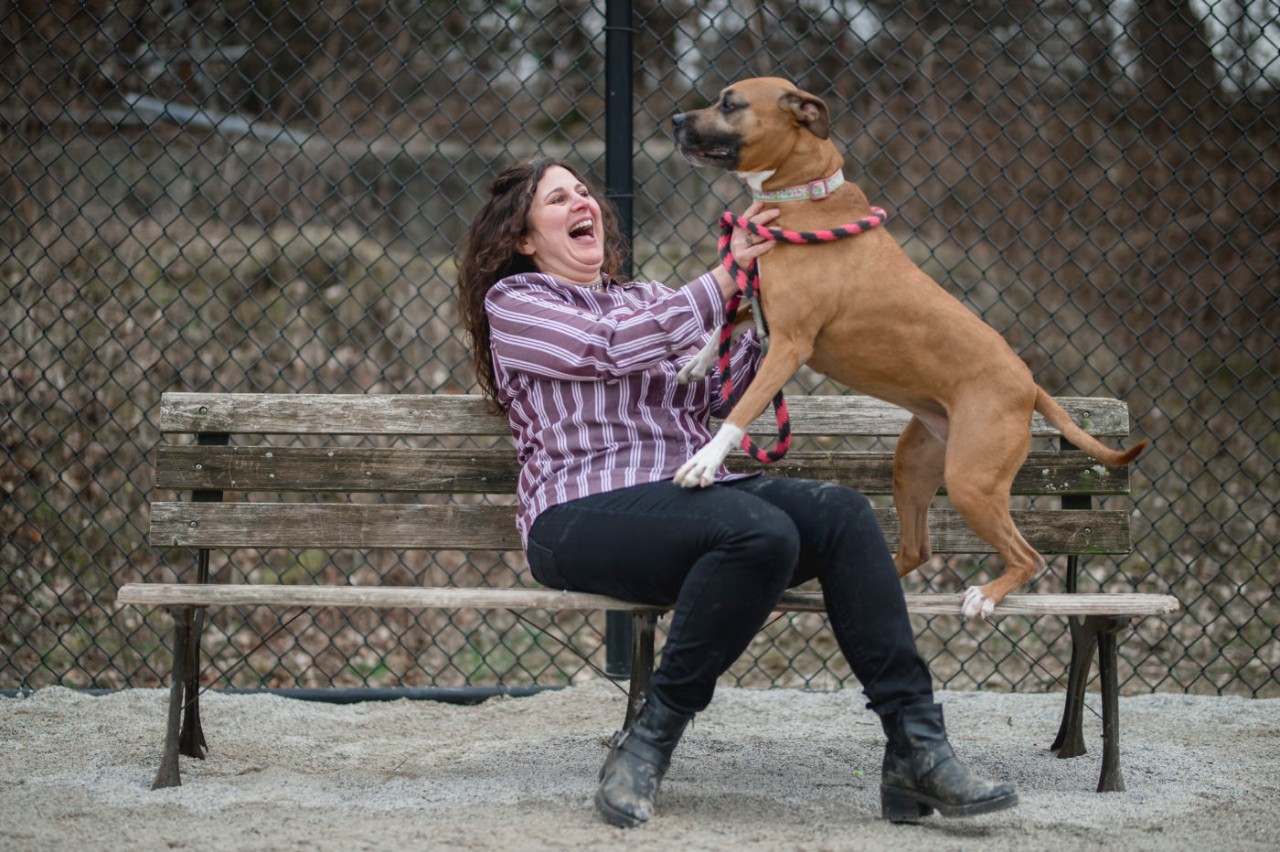TEACHING PEOPLE WITH APHASIA TO TRAIN DOGS

PERSONS WITH APHASIA TRAINING DOGS (PATD) PROGRAM, 2017 IPAC GRANT
People with post-stroke aphasia have difficulty recalling words and may also have difficulty putting together grammatically correct sentences or understanding what is said to them.
“Einstein really encourages people to use their imaginations to come up with projects and programs that benefit the people we serve.”
“Often, people with aphasia become quite skilled at using what you might think of as pragmatic or nonverbal communication,” says Sharon Antonucci, PhD, Director of the MossRehab Aphasia Center. “[When they need to], they use tone of voice, facial expression, changes in intonation, or gestures to communicate their meaning.”
A dog lover with obedience training experience, Dr. Antonucci noticed these characteristics might make people with aphasia ideal candidates for working with animals.
“Dogs don’t care about the words,” she says. “They care about tone of voice, gestures, and facial expressions.”
From there she thought, “Why not give those with aphasia opportunities to practice their communication skills by taking a dog through a basic obedience course?”
With a grant from the Albert Einstein Society (AES), the Aphasia Center launched a pilot program, led by Dr. Antonucci, that teaches center participants techniques for training their pets. It’s an innovative, 6- to 8-week therapy program that brings together clients and their dogs to learn one skill per week.

During the program, Dr. Antonucci works with clients to train their dog to understand and respond to cues, such as SIT or STAY. She measures progress on dog training and assesses any change in their self-reported quality of life using the Assessment for Living with Aphasia. Six months later she follows up to see how things are going with the individual, how well their dog has learned the skills, and how they’ve progressed toward their goals.
The opportunities are endless, she says—from health, wellness, and psychosocial benefits that come from interacting with dogs, to the practice of communication and learning a skill that may be new to them.
“It’s great seeing people’s faces light up, how happy and engaged they are working with their animal”.
“I’ve realized how much ‘flexing’ of cognitive and communication skills the training provides—problem-solving and thinking about what they’re doing, what’s working, or what needs to be tweaked in their communication.”
The training is working, she says. Several participants, now at the 6-month mark, have continued working with their dogs to train them to do things beyond what was learned during the program. They’re taking on the skills and principles acquired in the program and expanding them.
Dr. Antonucci recently partnered with the Pennsylvania Society for the Prevention of Cruelty to Animals (PSPCA) so people with aphasia without a dog or without a dog that’s eligible for training can still participate in the program—a benefit to both the participant and the shelter animal. She’s also submitted a National Institutes of Health grant for a scientific study of the program and its outcomes, none of which would have been possible without support from AES.
“How many people have the opportunity to work for an organization that supports innovation in such a concrete and real way?” Dr. Antonucci asks. “Einstein really encourages people to use their imaginations to come up with projects and programs that benefit the people we serve.”